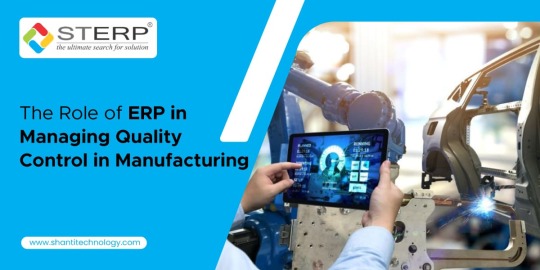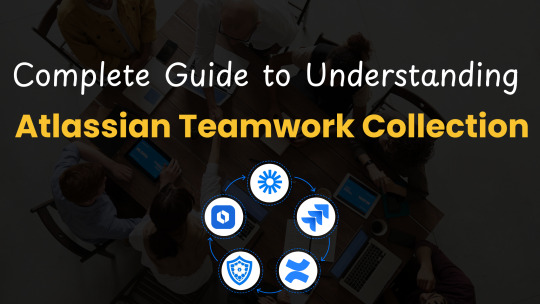#Enterprise Feedback Management Software
Explore tagged Tumblr posts
Text

Rewritten Scars Chapter 4
Prepare for sweet sweet Harry. This part turned out better than I thought it would. As always enjoy!:)
My Masterlist
Chapter 4: The Shift
Y/N’s POV
The next few weeks at Styles Enterprises were a whirlwind. Between adjusting to your new role and navigating the awkward tension of working in the same building as Harry Styles, you barely had time to catch your breath. To your surprise, he seemed to be taking your words seriously. There were no smug comments, no unnecessary run-ins. He gave you space, and you appreciated it.
But then little things started happening.
It began on a Tuesday morning when you arrived at your desk to find a mug waiting for you—a sleek black ceramic mug, steam curling from the top, carrying the unmistakable scent of your favorite coffee: caramel macchiato with a hint of hazelnut.
You froze, staring at the mug like it might explode. A sticky note was stuck to the side, the handwriting annoyingly neat.
“Thought you might need this. — H”
You looked around the office, half-expecting him to pop out from somewhere and smirk at you, but he was nowhere to be seen.
Still, you couldn’t help but take a sip. It was perfect—just the way you liked it.
Harry’s POV
Harry watched from the corner of the office, pretending to review some reports while keeping an eye on you. He couldn’t help the small smile that tugged at his lips when you lifted the mug, sniffed it suspiciously, and finally took a sip. He’d spent a ridiculous amount of time scrolling through your Instagram the night before, hoping to find some clue about your coffee order. He’d hit gold when he stumbled across an old photo captioned, “Starting the day right: caramel + hazelnut = heaven.”
He knew it was a small gesture, but it was a start.
Y/N’s POV
You didn’t look in his direction, but he saw the slight softening in your expression as you set the mug down. It wasn’t much, but it was enough to give him a glimmer of hope.
Over the next few days, more changes became noticeable. Harry made sure your workload was manageable, subtly redirecting overly demanding projects to other team members without making a big deal of it. He arranged for your team to get new ergonomic chairs after overhearing you mention a sore back. He even went out of his way to greet you every morning with a simple, “Good morning, Y/N,” his tone sincere and devoid of any arrogance.
At first, you couldn’t help but be suspicious. Was this some elaborate ploy to win you over? But the more you observed, the harder it was to deny that his efforts felt… genuine.
Harry’s POV
Every night, Harry replayed your words from the confrontation in his office. He knew he couldn’t erase the pain he’d caused, but he was determined to show you that he’d changed. That he wasn’t the same cruel boy who’d tormented you.
He made a point of asking your team for feedback—not in a way that singled you out, but just enough to gauge how things were going for you. He listened when they mentioned your frustrations, like the outdated software slowing down your work, and immediately approved a system upgrade.
It wasn’t about buying your forgiveness. It was about creating an environment where you didn’t have to feel the way he’d made you feel all those years ago.
Y/N’s POV
You noticed the changes but refused to acknowledge them directly. You didn’t want to give him the satisfaction of thinking he’d won you over. But the morning you walked into the office and found a sleek new laptop on your desk with another note—“For when the old one acts up again. Hope this helps.- H”—you felt a pang of something you couldn’t quite place.
Reluctantly, you began to wonder: Could people really change?
Harry’s POV
He didn’t expect a thank-you for the coffee, the laptop, or the chairs. Hell, he didn’t even expect you to speak to him outside of work matters. But that didn’t stop him from trying. Every little gesture, every effort to make your experience at Styles Enterprises a good one, was a step toward redemption in his eyes.
One evening, long after most of the office had cleared out, Harry sat at his desk, scrolling through a list of potential wellness initiatives for employees. He’d heard you mention during a meeting that mental health support was often overlooked in corporate environments, and he wanted to make sure that wasn’t the case here.
He drafted an email to HR suggesting an in-house therapist be made available for employees, attaching a few articles about the benefits. His finger hovered over the “Send” button for a moment before he clicked it.
It was just one more step in a journey he wasn’t sure he’d ever complete. But for the first time in his life, he didn’t mind the work.
Y/N’s POV
That Friday, you found yourself working late again, your office nearly empty as the city lights twinkled through the windows. Your new laptop hummed softly as you wrapped up an overdue report. You stretched your arms over your head, groaning quietly at the ache in your back.
“Burning the midnight oil?”
You jumped, startled by the voice. Turning, you saw Harry leaning casually against the doorway, holding two steaming paper cups.
“What are you doing here?” you asked, more sharply than you intended.
He raised the cups in his hands. “Thought you might need a pick-me-up.” He approached slowly, placing one on your desk. “Decaf caramel macchiato—extra hazelnut. Don’t worry, I checked this time. No surprises.”
Your stomach twisted—not with anger, but something far more dangerous. “You’re really going all in on this nice-guy act, huh?”
“It’s not an act,” he said quietly, pulling a chair from the empty desk beside you and sitting down. His green eyes locked onto yours, soft and unguarded. “I know I have a lot to make up for. But I want to.”
You rolled your eyes, though the heat creeping into your face betrayed you. “I’m starting to think you’re trying to bribe me with coffee.”
“Is it working?” he asked, his lips curling into a faint, boyish smile.
You couldn’t stop the laugh that escaped. “Maybe a little.”
He leaned forward slightly, resting his elbows on his knees. “I mean it, Y/N. I’m not doing this because I want you to forgive me overnight. I’m doing it because… I care. I’ve hurt you enough. The least I can do is try to make your life a little better now.”
The sincerity in his voice made your chest tighten. “You don’t owe me anything, Harry. I don’t need you to—”
“I do owe you,” he interrupted, his voice firm but gentle. “I owe you an apology for every word I ever said that made you doubt yourself. For every time I made you feel small. And I owe you a hell of a lot more than coffee and a new laptop to make up for it.”
The vulnerability in his words left you speechless. For the first time, you allowed yourself to see the man he’d become instead of the boy he used to be. And, God help you, that man was making it hard to stay angry.
“Harry…” you started, your voice faltering.
“What?” he asked softly, leaning in just enough that you could smell the faint hint of cedarwood cologne on him.
Your heart raced as you searched for something to say, but nothing came. Instead, you felt yourself drawn to the warmth in his gaze, the way his lips quirked up like he could read your mind and was waiting for you to catch up.
“Why are you being so sweet?” you whispered finally.
His smile widened, but it wasn’t smug—it was soft, disarming. “Because I want to be. Because I’ve spent too much time being an idiot, and I’m done with that. And because…” He hesitated, his eyes flicking to your lips for just a second before returning to your face. “Because you deserve it.”
The air between you shifted, charged with something electric. You hated how fast your pulse was racing, how the flutter in your stomach betrayed every ounce of resolve you’d built up.
“You’re trouble,” you muttered, shaking your head.
“Only the good kind,” he countered, his voice low.
And for the first time in years, you didn’t feel the weight of anger or resentment when you looked at him. Instead, you felt your heart start to crack open, just a little.
“Maybe,” you said softly, a small smile tugging at your lips. “But don’t push your luck.”
He grinned, leaning back slightly but keeping his gaze locked on yours. “Wouldn’t dream of it.”
But the way his eyes lingered on you, warm and hopeful, told you this was far from over. And for once, you weren’t sure you wanted it to be.
#harry styles x plus size reader#ceo! harry styles#harry styles one shot#plus size reader#niall horan imagine#one direction#harry styles#harry styles angst#fanfiction#harry styles fanfic#harry styles series#harry styles blurb#harry styles writing#harry styles imagine#harry styles fanfiction
46 notes
·
View notes
Text
Ganesh Shankar, CEO & Co-Founder of Responsive – Interview Series
New Post has been published on https://thedigitalinsider.com/ganesh-shankar-ceo-co-founder-of-responsive-interview-series/
Ganesh Shankar, CEO & Co-Founder of Responsive – Interview Series


Ganesh Shankar, CEO and Co-Founder of Responsive, is an experienced product manager with a background in leading product development and software implementations for Fortune 500 enterprises. During his time in product management, he observed inefficiencies in the Request for Proposal (RFP) process—formal documents organizations use to solicit bids from vendors, often requiring extensive, detailed responses. Managing RFPs traditionally involves multiple stakeholders and repetitive tasks, making the process time-consuming and complex.
Founded in 2015 as RFPIO, Responsive was created to streamline RFP management through more efficient software solutions. The company introduced an automated approach to enhance collaboration, reduce manual effort, and improve efficiency. Over time, its technology expanded to support other complex information requests, including Requests for Information (RFIs), Due Diligence Questionnaires (DDQs), and security questionnaires.
Today, as Responsive, the company provides solutions for strategic response management, helping organizations accelerate growth, mitigate risk, and optimize their proposal and information request processes.
What inspired you to start Responsive, and how did you identify the gap in the market for response management software?
My co-founders and I founded Responsive in 2015 after facing our own struggles with the RFP response process at the software company we were working for at the time. Although not central to our job functions, we dedicated considerable time assisting the sales team with requests for proposals (RFPs), often feeling underappreciated despite our vital role in securing deals. Frustrated with the lack of technology to make the RFP process more efficient, we decided to build a better solution. Fast forward nine years, and we’ve grown to nearly 500 employees, serve over 2,000 customers—including 25 Fortune 100 companies—and support nearly 400,000 users worldwide.
How did your background in product management and your previous roles influence the creation of Responsive?
As a product manager, I was constantly pulled by the Sales team into the RFP response process, spending almost a third of my time supporting sales instead of focusing on my core product management responsibilities. My two co-founders experienced a similar issue in their technology and implementation roles. We recognized this was a widespread problem with no existing technology solution, so we leveraged our almost 50 years of combined experience to create Responsive. We saw an opportunity to fundamentally transform how organizations share information, starting with managing and responding to complex proposal requests.
Responsive has evolved significantly since its founding in 2015. How do you maintain the balance between staying true to your original vision and adapting to market changes?
First, we’re meticulous about finding and nurturing talent that embodies our passion – essentially cloning our founding spirit across the organization. As we’ve scaled, it’s become critical to hire managers and team members who can authentically represent our core cultural values and commitment.
At the same time, we remain laser-focused on customer feedback. We document every piece of input, regardless of its size, recognizing that these insights create patterns that help us navigate product development, market positioning, and any uncertainty in the industry. Our approach isn’t about acting on every suggestion, but creating a comprehensive understanding of emerging trends across a variety of sources.
We also push ourselves to think beyond our immediate industry and to stay curious about adjacent spaces. Whether in healthcare, technology, or other sectors, we continually find inspiration for innovation. This outside-in perspective allows us to continually raise the bar, inspiring ideas from unexpected places and keeping our product dynamic and forward-thinking.
What metrics or success indicators are most important to you when evaluating the platform’s impact on customers?
When evaluating Responsive’s impact, our primary metric is how we drive customer revenue. We focus on two key success indicators: top-line revenue generation and operational efficiency. On the efficiency front, we aim to significantly reduce RFP response time – for many, we reduce it by 40%. This efficiency enables our customers to pursue more opportunities, ultimately accelerating their revenue generation potential.
How does Responsive leverage AI and machine learning to provide a competitive edge in the response management software market?
We leverage AI and machine learning to streamline response management in three key ways. First, our generative AI creates comprehensive proposal drafts in minutes, saving time and effort. Second, our Ask solution provides instant access to vetted organizational knowledge, enabling faster, more accurate responses. Third, our Profile Center helps InfoSec teams quickly find and manage security content.
With over $600 billion in proposals managed through the Responsive platform and four million Q&A pairs processed, our AI delivers intelligent recommendations and deep insights into response patterns. By automating complex tasks while keeping humans in control, we help organizations grow revenue, reduce risk, and respond more efficiently.
What differentiates Responsive’s platform from other solutions in the industry, particularly in terms of AI capabilities and integrations?
Since 2015, AI has been at the core of Responsive, powering a platform trusted by over 2,000 global customers. Our solution supports a wide range of RFx use cases, enabling seamless collaboration, workflow automation, content management, and project management across teams and stakeholders.
With key AI capabilities—like smart recommendations, an AI assistant, grammar checks, language translation, and built-in prompts—teams can deliver high-quality RFPs quickly and accurately.
Responsive also offers unmatched native integrations with leading apps, including CRM, cloud storage, productivity tools, and sales enablement. Our customer value programs include APMP-certified consultants, Responsive Academy courses, and a vibrant community of 1,500+ customers sharing insights and best practices.
Can you share insights into the development process behind Responsive’s core features, such as the AI recommendation engine and automated RFP responses?
Responsive AI is built on the foundation of accurate, up-to-date content, which is critical to the effectiveness of our AI recommendation engine and automated RFP responses. AI alone cannot resolve conflicting or incomplete data, so we’ve prioritized tools like hierarchical tags and robust content management to help users organize and maintain their information. By combining generative AI with this reliable data, our platform empowers teams to generate fast, high-quality responses while preserving credibility. AI serves as an assistive tool, with human oversight ensuring accuracy and authenticity, while features like the Ask product enable seamless access to trusted knowledge for tackling complex projects.
How have advancements in cloud computing and digitization influenced the way organizations approach RFPs and strategic response management?
Advancements in cloud computing have enabled greater efficiency, collaboration, and scalability. Cloud-based platforms allow teams to centralize content, streamline workflows, and collaborate in real time, regardless of location. This ensures faster turnaround times and more accurate, consistent responses.
Digitization has also enhanced how organizations manage and access their data, making it easier to leverage AI-powered tools like recommendation engines and automated responses. With these advancements, companies can focus more on strategy and personalization, responding to RFPs with greater speed and precision while driving better outcomes.
Responsive has been instrumental in helping companies like Microsoft and GEODIS streamline their RFP processes. Can you share a specific success story that highlights the impact of your platform?
Responsive has played a key role in supporting Microsoft’s sales staff by managing and curating 20,000 pieces of proposal content through its Proposal Resource Library, powered by Responsive AI. This technology enabled Microsoft’s proposal team to contribute $10.4 billion in revenue last fiscal year. Additionally, by implementing Responsive, Microsoft saved its sellers 93,000 hours—equivalent to over $17 million—that could be redirected toward fostering stronger customer relationships.
As another example of Responsive providing measurable impact, our customer Netsmart significantly improved their response time and efficiency by implementing Responsive’s AI capabilities. They achieved a 10X faster response time, increased proposal submissions by 67%, and saw a 540% growth in user adoption. Key features such as AI Assistant, Requirements Analysis, and Auto Respond played crucial roles in these improvements. The integration with Salesforce and the establishment of a centralized Content Library further streamlined their processes, resulting in a 93% go-forward rate for RFPs and a 43% reduction in outdated content. Overall, Netsmart’s use of Responsive’s AI-driven platform led to substantial time savings, enhanced content accuracy, and increased productivity across their proposal management operations.
JAGGAER, another Responsive customer, achieved a double-digit win-rate increase and 15X ROI by using Responsive’s AI for content moderation, response creation, and Requirements Analysis, which improved decision-making and efficiency. User adoption tripled, and the platform streamlined collaboration and content management across multiple teams.
Where do you see the response management industry heading in the next five years, and how is Responsive positioned to lead in this space?
In the next five years, I see the response management industry being transformed by AI agents, with a focus on keeping humans in the loop. While we anticipate around 80 million jobs being replaced, we’ll simultaneously see 180 million new jobs created—a net positive for our industry.
Responsive is uniquely positioned to lead this transformation. We’ve processed over $600 billion in proposals and built a database of almost 4 million Q&A pairs. Our massive dataset allows us to understand complex patterns and develop AI solutions that go beyond simple automation.
Our approach is to embrace AI’s potential, finding opportunities for positive outcomes rather than fearing disruption. Companies with robust market intelligence, comprehensive data, and proven usage will emerge as leaders, and Responsive is at the forefront of that wave. The key is not just implementing AI, but doing so strategically with rich, contextual data that enables meaningful insights and efficiency.
Thank you for the great interview, readers who wish to learn more should visit Responsive,
#000#adoption#agents#ai#AI AGENTS#ai assistant#AI-powered#amp#Analysis#approach#apps#automation#background#billion#CEO#Cloud#cloud computing#cloud storage#collaborate#Collaboration#Community#Companies#comprehensive#computing#content#content management#content moderation#courses#crm#customer relationships
7 notes
·
View notes
Text
How Low-Code Platforms Are Transforming Healthcare and Elevating Patient Experience

The healthcare sector is a highly evolving landscape. The current race for digitization has made it crucial for service providers to stay updated with the latest technology and regulations. Patient satisfaction is of the highest requirement, but inefficient processes, paperwork, and security concerns often hinder positive outcomes. To enhance speed, transparency, and efficiency, many providers are turning to low-code platforms, driving digital transformation.
Why Low-Code is a Perfect Fit for Healthcare
Low-code platforms enable both technical and non-technical users to build digital healthcare solutions. It simplifies healthcare operations, speeds-up processes and makes healthcare more accessible for patients.
Most healthcare professionals lack IT training, limiting their ability to use digital tools. Low-code bridges this gap by providing an intuitive interface for rapid, cost-effective app development. With scalable architectures and seamless third-party integration, these platforms improve workflows, patient care, and operational efficiency.
Key Benefits of Low-Code in Healthcare
Workflow Optimization and Automation:
Low-code platforms like iLeap streamline administrative and clinical processes. Automating billing, budgeting, and resource management reduces manual effort and errors. Tasks like appointment scheduling and reminders can also be automated, freeing up time for patient care.
Seamless Integration:
A majority of legacy healthcare enterprises rely on legacy systems which is often a major reason for downtimes and slow processes. A robust low-code platform integrates easily with existing software and third-party applications, ensuring unified workflows without IT disruptions.
Customizable Features:
Low-code solutions automate emails, manage patient records, and schedule appointments efficiently. Platforms like iLeap also support threshold management and escalation for timely responses to critical situations.
Enhancing Patient Care with Low-Code
Patient Registration and Records :
Custom applications streamline patient intake, scheduling, second opinions, and billing, reducing wait times and improving experiences.
Automated Appointment Reminders and Feedback:
By automating reminders and surveys, healthcare staff can focus on critical tasks, reducing no-shows and improving service quality.
Telehealth and Centralized Communication:
Legacy systems cause fragmented communication and delays. Low-code platforms facilitate telehealth solutions, including video consultations, secure messaging, and EHR integration, ensuring timely care.
Compliance and Accountability:
Regulatory compliance is crucial. Low-code solutions streamline reporting and documentation, ensuring transparency and adherence to guidelines. By 2030, on-demand compliance reports will be necessary, making digital transformation essential.
iLeap: Driving Digital Healthcare Transformation
iLeap enables healthcare providers to build secure, scalable applications tailored to their needs. By optimizing workflows, financial management, and patient experiences, iLeap helps organizations stay ahead in digital transformation.
Learn more about iLeap’s low-code application development platform. Schedule a call with us
2 notes
·
View notes
Text
The Role of ERP in Managing Quality Control in Manufacturing
In the highly competitive manufacturing sector, maintaining stringent quality control is not just a necessity but a strategic advantage. In a landscape where efficiency and precision define success, integrating ERP for manufacturing companies in India has become a game-changer. The role of manufacturing ERP software in India extends beyond operational management; it plays a pivotal part in ensuring quality control throughout the production lifecycle.

Understanding the Need for Quality Control in Manufacturing
Quality control ensures that products meet predefined standards, adhere to regulations, and satisfy customer expectations. Without effective systems in place, manufacturing companies risk producing defective products, incurring financial losses, and damaging their reputation. This is where manufacturing enterprise resource planning software in India comes into play. By centralizing data and streamlining processes, ERP systems empower manufacturers to monitor, measure, and enhance quality at every stage.
How ERP Facilitates Quality Control in Manufacturing
1. Centralized Data Management
ERP systems consolidate data from various departments into a unified platform. This centralization is crucial for quality control, as it provides real-time access to critical metrics like raw material quality, production processes, and final product evaluations. ERP software companies in India ensure that manufacturers have a single source of truth, enabling faster and more informed decision-making.
2. Automation of Quality Checks
The manufacturing ERP module often includes automated tools for conducting quality checks. By automating repetitive tasks such as inspecting raw materials, testing products, and verifying compliance, ERP reduces human error and enhances efficiency. This capability is particularly valuable for industries with strict quality standards, such as automotive, pharmaceuticals, and electronics.
3. Compliance Management
Staying compliant with industry regulations is non-negotiable for manufacturing companies. ERP systems provide features that help monitor compliance parameters, generate audit reports, and track regulatory changes. ERP software providers in India offer tailored solutions to meet local and global compliance requirements, ensuring seamless operations.
4. Real-Time Analytics and Reporting
Real-time analytics is a cornerstone of modern ERP systems. These tools allow manufacturers to track quality metrics in real-time, identify deviations, and implement corrective actions instantly. The insights gained from these analytics not only improve quality but also drive process optimization.
5. Supply Chain Integration
Quality control begins with raw materials and extends through the supply chain. ERP systems facilitate end-to-end supply chain visibility, enabling manufacturers to assess supplier performance and ensure the quality of incoming materials. Many ERP solution providers in India offer integrated supply chain management modules to support this functionality.
6. Continuous Improvement through Feedback Loops
ERP systems support continuous improvement by capturing and analyzing feedback from quality control processes. This data is invaluable for identifying recurring issues, uncovering root causes, and implementing preventive measures. Top 10 ERP software providers in India have built-in tools for continuous quality enhancement, ensuring sustained excellence.
Benefits of ERP for Quality Control in Manufacturing
Integrating an ERP system offers several tangible benefits for quality control:
Enhanced Traceability: ERP systems provide traceability across the production process, making it easier to track and rectify defects.
Reduced Waste: By identifying inefficiencies and defects early, ERP reduces waste and optimizes resource utilization.
Improved Customer Satisfaction: Consistently delivering high-quality products strengthens customer trust and loyalty.
Cost Savings: Preventing defects and ensuring compliance minimizes the financial risks associated with recalls, fines, and reputational damage.
Choosing the Right ERP Software for Quality Control
Selecting the best ERP solution requires careful consideration of your manufacturing needs. Here are some factors to consider:
Industry-Specific Features: Look for manufacturing ERP software in India that offers modules tailored to your industry.
Scalability: Ensure the ERP system can scale with your business as it grows.
Integration Capabilities: The ERP should integrate seamlessly with your existing systems and technologies.
Vendor Expertise: Collaborate with an ERP software company in India with proven expertise in delivering quality solutions.
Why Indian Manufacturers Need ERP for Quality Control
India's manufacturing sector is poised for growth, driven by initiatives like Make in India and PLI schemes. However, this growth comes with increasing competition and stricter quality expectations. Leveraging ERP software providers in India can give manufacturers the edge they need to thrive in this evolving landscape.
A Trusted Partner for ERP Implementation
With numerous options available, finding the right ERP vendor is crucial. Leading ERP software companies in India offer customized solutions to meet the unique challenges of Indian manufacturers. These providers combine deep industry knowledge with cutting-edge technology to deliver exceptional results.
Shantitechnology: A Trusted Name in ERP Solutions
Shantitechnology, a renowned name among top 10 ERP software providers in India, specializes in delivering robust ERP solutions for manufacturing companies. Our comprehensive manufacturing ERP module is designed to address the intricacies of quality control, ensuring manufacturers achieve excellence with ease.
Conclusion
In the modern manufacturing landscape, quality control is not an isolated function but a core component of operational success. ERP systems empower manufacturers to seamlessly integrate quality control into their workflows, ensuring consistent product excellence. As one of the best ERP software providers in India, Shantitechnology is committed to helping manufacturers navigate the complexities of quality control with innovative ERP solutions. By embracing the right ERP system, Indian manufacturers can enhance their competitive edge, drive customer satisfaction, and achieve sustainable growth.
If you are looking to elevate your quality control processes, partner with a leading ERP software company in India like Shantitechnology. Contact us today to learn more about our customized ERP solutions and how they can transform your manufacturing operations.
#ERP software in India#Top 10 ERP software providers in India#ERP software company in India#Engineering ERP Software company in India#ERP software for engineering companies#Engineering ERP software solution#ERP software for engineering companies in India#ERP software providers in India#ERP software companies in India#ERP solution providers in India#Best ERP software provider in India#ERP for manufacturing company in India#Manufacturing ERP software in India#Manufacturing enterprise resource planning software in India#Manufacturing ERP module
5 notes
·
View notes
Text
Lean vs. Waterfall Business Models: Choosing the Right Approach for Your Venture

When starting or scaling a business, one of the most critical decisions you’ll make is choosing the operational approach that aligns with your goals, resources, and industry demands. Two popular frameworks that often guide entrepreneurs are the Lean and Waterfall business models. Understanding their principles, advantages, and challenges can empower you to select the model that best suits your vision and market.
What is the Lean Business Model?
The Lean business model prioritizes efficiency, adaptability, and continuous improvement. It focuses on creating value for the customer while minimizing waste. Inspired by lean manufacturing principles, particularly those pioneered by Toyota, this model has become a cornerstone of modern startups and innovation-driven enterprises.
Key Principles of the Lean Model:
Validated Learning: Experimentation and customer feedback drive product and process development.
Build-Measure-Learn Cycle: Rapid prototyping allows for iterative improvements.
Customer-Centric Approach: Emphasis on understanding and addressing customer needs.
Waste Reduction: Eliminating activities and resources that don’t add value.
Advantages of Lean:
Cost Efficiency: By focusing on essential features and avoiding overproduction, businesses conserve resources.
Flexibility: Quick pivots are possible when market demands or customer preferences shift.
Speed to Market: Minimal Viable Products (MVPs) enable businesses to launch quickly and refine over time.
Challenges of Lean:
High Uncertainty: Iterative processes may result in unpredictability.
Resource Intensity: Constant feedback loops and adjustments require dedicated time and effort.
Scalability Issues: Lean is ideal for early-stage businesses but may need adaptation for large-scale operations.
What is the Waterfall Business Model?
The Waterfall business model, rooted in traditional project management, follows a linear and sequential approach. This model is structured around defined stages, where each phase must be completed before moving to the next. While it originated in industries like construction and software development, it’s also applicable to businesses requiring meticulous planning and execution.
Key Principles of the Waterfall Model:
Sequential Progression: Projects move from concept to completion in defined steps.
Detailed Documentation: Comprehensive plans, budgets, and timelines are created upfront.
Defined Deliverables: Clear milestones ensure all tasks are completed in order.
Stability: A fixed plan minimizes changes during the process.
Advantages of Waterfall:
Predictability: Clear timelines and budgets enhance planning and stakeholder confidence.
Quality Assurance: Extensive documentation ensures thorough testing and evaluation.
Ease of Implementation: Ideal for projects with well-defined requirements.
Challenges of Waterfall:
Rigidity: Limited flexibility to adapt to changing market conditions.
Delayed Feedback: Customer input often comes late, increasing the risk of misalignment.
Time-Intensive: Sequential phases may lead to longer development cycles.
How to Choose Between Lean and Waterfall
The choice between Lean and Waterfall depends on your business’s nature, goals, and industry.
Lean is Ideal For:
Startups and innovative ventures with evolving market demands.
Projects where customer feedback is essential.
Teams prioritizing speed and adaptability.
Waterfall is Ideal For:
Established businesses with fixed goals and budgets.
Industries like construction, healthcare, or manufacturing, where precision is critical.
Long-term projects requiring robust planning.
Conclusion
Both the Lean and Waterfall business models offer unique advantages and come with their own set of challenges. While the Lean model fosters innovation and flexibility, the Waterfall approach ensures stability and predictability. Entrepreneurs should carefully evaluate their project’s scope, resources, and objectives before committing to a framework. By aligning your operational strategy with your business’s needs, you set the stage for sustainable growth and success.
2 notes
·
View notes
Text
With Innrly | Streamline Your Hospitality Operations

Manage all your hotels from anywhere | Transformation without transition
Managing a hotel or a multi-brand portfolio can be overwhelming, especially when juggling multiple systems, reports, and data sources. INNRLY, a cutting-edge hotel management software, revolutionizes the way hospitality businesses operate by delivering intelligent insights and simplifying workflows—all without the need for system changes or upgrades. Designed for seamless integration and powerful automation, INNRLY empowers hotel owners and managers to make data-driven decisions and enhance operational efficiency.
Revolutionizing Hotel Management
In the fast-paced world of hospitality, efficiency is the cornerstone of success. INNRLY’s cloud-based platform offers a brand-neutral, user-friendly interface that consolidates critical business data across all your properties. Whether you manage a single boutique hotel or a portfolio of properties spanning different regions, INNRLY provides an all-in-one solution for optimizing performance and boosting productivity.
One Dashboard for All Your Properties:
Say goodbye to fragmented data and manual processes. INNRLY enables you to monitor your entire portfolio from a single dashboard, providing instant access to key metrics like revenue, occupancy, labor costs, and guest satisfaction. With this unified view, hotel managers can make informed decisions in real time.
Customizable and Scalable Solutions:
No two hospitality businesses are alike, and INNRLY understands that. Its customizable features adapt to your unique needs, whether you're running a small chain or managing an extensive enterprise. INNRLY grows with your business, ensuring that your operations remain efficient and effective.
Seamless Integration for Effortless Operations:
One of INNRLY’s standout features is its ability to integrate seamlessly with your existing systems. Whether it's your property management system (PMS), accounting software, payroll/labor management tools, or even guest feedback platforms, INNRLY pulls data together effortlessly, eliminating the need for system overhauls.
Automated Night Audits:
Tired of labor-intensive night audits? INNRLY’s Night Audit+ automates this crucial process, providing detailed reports that are automatically synced with your accounting software. It identifies issues such as declined credit cards or high balances, ensuring no problem goes unnoticed.
A/R and A/P Optimization:
Streamline your accounts receivable (A/R) and accounts payable (A/P) processes to improve cash flow and avoid costly mistakes. INNRLY’s automation reduces manual entry, speeding up credit cycles and ensuring accurate payments.
Labor and Cost Management:
With INNRLY, you can pinpoint inefficiencies, monitor labor hours, and reduce costs. Detailed insights into overtime risks, housekeeping minutes per room (MPR), and other labor metrics help you manage staff productivity effectively.
Empowering Data-Driven Decisions:
INNRLY simplifies decision-making by surfacing actionable insights through its robust reporting and analytics tools.
Comprehensive Reporting:
Access reports on your schedule, from detailed night audit summaries to trial balances and franchise billing reconciliations. Consolidated data across multiple properties allows for easy performance comparisons and trend analysis.
Benchmarking for Success:
Compare your properties' performance against industry standards or other hotels in your portfolio. Metrics such as ADR (Average Daily Rate), RevPAR (Revenue Per Available Room), and occupancy rates are presented in an easy-to-understand format, empowering you to identify strengths and areas for improvement.
Guest Satisfaction Insights:
INNRLY compiles guest feedback and satisfaction scores, enabling you to take prompt action to enhance the guest experience. Happy guests lead to better reviews and increased bookings, driving long-term success.

Key Benefits of INNRLY
Single Login, Full Control: Manage all properties with one login, saving time and reducing complexity.
Error-Free Automation: Eliminate manual data entry, reducing errors and increasing productivity.
Cost Savings: Pinpoint problem areas to reduce labor costs and optimize spending.
Enhanced Accountability: Hold each property accountable for issues flagged by INNRLY’s tools, supported by an optional Cash Flow Protection Team at the enterprise level.
Data Security: Protect your credentials and data while maintaining your existing systems.
Transforming Hospitality Without Transition
INNRLY’s philosophy is simple: transformation without transition. You don’t need to replace or upgrade your existing systems to benefit from INNRLY. The software integrates effortlessly into your current setup, allowing you to focus on what matters most—delivering exceptional guest experiences and achieving your business goals.
Who Can Benefit from INNRLY?
Hotel Owners:
For owners managing multiple properties, INNRLY offers a centralized platform to monitor performance, identify inefficiencies, and maximize profitability.
General Managers:
Simplify day-to-day operations with automated processes and real-time insights, freeing up time to focus on strategic initiatives.
Accounting Teams:
INNRLY ensures accurate financial reporting by syncing data across systems, reducing errors, and streamlining reconciliation processes.
Multi-Brand Portfolios:
For operators managing properties across different brands, INNRLY’s brand-neutral platform consolidates data, making it easy to compare and optimize performance.
Contact INNRLY Today

Ready to revolutionize your hotel management? Join the growing number of hospitality businesses transforming their operations with INNRLY.
Website: www.innrly.com
Email: [email protected]
Phone: 833-311-0777
#Innrly#Innrly Hotel Management Software#Bank Integrations in Hospitality Software#Tracking Hotel Compliance#hotel performance software#hotel portfolio software#Hotel Performance Management Software#hotel reconciliation software#Hotel Data Entry Software#accounting software hotels#hotel banking software#hospitality automated accounting software#hotel automation software hotel bookkeeping software#back office hotel accounting software#hospitality back office software#accounting hospitality software#Hotel Management Accounting Software#Hotel Accounting Software#Hospitality Accounting Software#Accounting Software for Hotels#Hotel Budgeting Software#Automate Night Audit Software#Automate Night Audit Process#Best Hotel Accounting Software#Best Accounting Software For Hotels#Financial & Hotel Accounting Software#Hospitality Accounting Solutions
2 notes
·
View notes
Text
Enterprise Resource Management: Essential Software Testing Services

Enterprise Resource Management (ERM) software is the backbone of modern business operations, ensuring that all aspects of an organization work in harmony. To maximize the effectiveness of ERM software, thorough software testing services are essential. Here's how to approach it:
1. Importance of Software Testing in ERM
Software testing ensures that all ERM modules function correctly, avoiding disruptions in critical business processes.
2. Key Areas to Focus On
Functionality Testing: Validate that each module performs its intended function.
Performance Testing: Ensure the system can handle expected loads without lag.
Security Testing: Protect sensitive business data from potential breaches.
Integration Testing: Confirm that the ERM integrates smoothly with other enterprise systems.
3. Common Challenges
Software testing in ERM can be complex due to the interdependencies between different modules. It's crucial to adopt a comprehensive testing strategy that covers all bases.
4. Tools and Technologies
Utilize advanced testing tools like Selenium, JIRA, and LoadRunner to automate testing processes and improve accuracy.
5. Best Practices
Regularly update test cases to reflect changes in the software.
Involve end-users in the testing process to gather practical feedback.
Conduct both manual and automated tests for thorough coverage.
6. Case Studies
Successful ERM implementations highlight the role of rigorous testing in preventing system failures and enhancing overall performance.
7. Final Thoughts
Implementing robust software testing services in your ERM project ensures smooth operations and long-term success. Ensure that your ERM software not only meets current business needs but is also scalable for future growth.
2 notes
·
View notes
Text
Unlocking Business Success with Local Reviews
In today's competitive marketplace, the significance of customer reviews cannot be overstated. They are not just testimonials; they are essential markers of credibility and trustworthiness for any local business. Local Reviews, a groundbreaking platform designed by the renowned team behind Shopper Approved™, Trust Guard™, and Cart Rocket™, empowers local retail businesses, services, and professionals to harness the power of customer feedback effectively.

The Local Reviews Difference
Local Reviews was conceived to simplify the process of collecting reviews for local busgoogle reviewsinesses, making it easier and faster than ever before. At its core, Local Reviews understands that positive customer feedback is the lifeblood of local enterprises. It's not merely about boasting a stellar reputation; it's about leveraging that reputation to enhance online visibility and ultimately drive sales.
Our Proven Track Record
Developed by an award-winning team with a remarkable legacy in software innovation, Local Reviews is part of a lineage that includes Shopper Approved™, a trusted name in customer ratings and reviews. This heritage spans over a decade of excellence, during which our team has been recognized as a 2x Inc. 500 fastest-growing company and received accolades such as Utah Fast 50 and Utah 100 multiple times.

A Commitment to Growth
Local Reviews is the brainchild of a privately held US-owned and operated company headquartered in Ogden, Utah. Our team is driven by a shared passion for software development and a deep-seated commitment to helping our clients succeed. We understand the challenges faced by local businesses in today's dynamic marketplace and are dedicated to providing them with the tools they need to thrive.
Empowering Local Businesses
What sets Local Reviews apart is its user-friendly approach. We recognize that time is a precious commodity for local business owners and professionals. Therefore, our platform is designed to seamlessly integrate into existing workflows, allowing businesses to effortlessly gather, manage, and showcase customer reviews.
Building Trust, Driving Sales

The impact of customer reviews on consumer behavior cannot be underestimated. Research consistently shows that a majority of consumers read online reviews before making a purchase decision. Positive reviews build trust and confidence in potential customers, leading to increased foot traffic and higher conversion rates.
Key Features of Local Reviews
Streamlined Review Collection: Local Reviews simplifies the process of soliciting feedback from customers. With customizable review request templates and automated reminders, businesses can effortlessly gather authentic reviews.
Enhanced Online Visibility: Leveraging customer reviews, businesses can improve their online presence. Local Reviews helps businesses appear more prominently in search engine results, driving organic traffic.
Trust Building: Positive reviews serve as social proof, enhancing a business's credibility and reputation. Local Reviews provides tools to showcase these reviews across multiple platforms, amplifying their impact.
Actionable Insights: Beyond collecting reviews, Local Reviews offers valuable insights into customer sentiment. Businesses can analyze feedback to identify areas of improvement and refine their offerings.
Join the Local Reviews Community
Local Reviews isn't just a platform; it's a community of local businesses committed to growth and success. Our clients benefit from ongoing support and resources aimed at optimizing their review management strategies.
Get Started Today
If you're a local retail business, service provider, or professional looking to enhance your online presence and drive sales, Local Reviews is your solution. Join the ranks of businesses that have leveraged the power of customer feedback to achieve unprecedented success.
Conclusion
In a digital age dominated by consumer choice, local businesses must embrace innovative strategies to stand out. Local Reviews offers a transformative solution by empowering businesses to collect, manage, and leverage customer reviews effectively. By harnessing the collective voice of satisfied customers, businesses can build trust, enhance visibility, and drive sales. Embrace the power of Local Reviews and unlock the true potential of your business today.
3 notes
·
View notes
Text
The Profound Benefits of Embracing Full Stack Development
Introduction: In the dynamic realm of software development, full stack developers have emerged as indispensable assets, equipped with the skills to navigate both front-end and back-end technologies seamlessly. This comprehensive exploration sheds light on the multifaceted advantages of embracing full stack development, unveiling the unique benefits and opportunities that accompany proficiency in both facets of the development stack.

Unlocking the Benefits of Full Stack Development:
Versatility and Adaptability: Full stack developers possess a diverse skill set, encompassing proficiency in both front-end and back-end technologies. This versatility enables them to fluidly transition between different aspects of development, adeptly adapting to project requirements and challenges.Mastery of client-side and server-side technologies empowers full stack developers to tackle a myriad of tasks, from crafting intuitive user interfaces to implementing complex business logic. This adaptability renders them invaluable assets to development teams, capable of contributing to various stages of the software development lifecycle with finesse.
Comprehensive Project Ownership: A defining advantage of full stack developers lies in their ability to assume end-to-end ownership of projects, from inception to deployment. With a comprehensive understanding of both front-end and back-end technologies, full stack developers can oversee all facets of development, ensuring seamless integration and coherence throughout the project lifecycle.This holistic perspective empowers full stack developers to make informed decisions at every juncture of development, from conceptualization and architecture to execution and optimization. By embracing responsibility for the entire project, full stack developers drive efficiency, consistency, and quality, culminating in successful project outcomes.
Expanded Employability and Career Prospects: Full stack developers are highly coveted by employers owing to their diverse skill set and capacity to work across multiple technologies. Proficiency in both front-end and back-end technologies opens the door to a plethora of career opportunities across various industries and sectors.Employers prize full stack developers for their adaptability, versatility, and ability to deliver end-to-end solutions that align with business objectives. Whether it entails developing web applications, mobile apps, or enterprise software, full stack developers are poised to excel in diverse roles and environments, making them sought-after candidates in the job market.
Efficient Collaboration and Communication: Full stack developers excel in cross-functional collaboration, proficiently communicating with designers, product managers, and fellow developers alike. Their grasp of both front-end and back-end technologies bridges the gap between different teams and departments, fostering smoother communication and collaboration.This collaborative prowess enables full stack developers to seamlessly integrate with cross-functional teams, ensuring that project requirements are comprehended, feedback is incorporated, and deliverables are met punctually and within budget constraints. By fostering a culture of collaboration and synergy, full stack developers contribute significantly to project success and organizational growth.

Agile Prototyping and Iteration: Full stack developers possess a knack for rapid prototyping and iteration, leveraging their comprehensive understanding of both front-end and back-end technologies. This proficiency enables them to swiftly prototype and iterate on features, accelerating development cycles and fostering innovation.By gathering feedback iteratively and swiftly incorporating user input and stakeholder feedback, full stack developers expedite the development process. This agile approach allows them to identify and address issues promptly, resulting in faster development cycles and heightened product quality.
Holistic Problem-Solving Proficiency: Full stack developers boast holistic problem-solving skills, enabling them to tackle challenges across the user interface and server layers. With an in-depth comprehension of both front-end and back-end technologies, full stack developers approach problems from diverse angles, exploring a plethora of solutions and technologies to pinpoint the most effective remedy.This comprehensive problem-solving approach fosters creativity, innovation, and critical thinking, as full stack developers explore various methodologies and techniques to resolve intricate problems. By harnessing their diverse skill set and experience, full stack developers surmount obstacles and deliver innovative solutions that cater to user needs and business imperatives.
Continuous Learning and Professional Growth: Full stack development is an ever-evolving domain that encourages continuous learning and professional growth. With new technologies, frameworks, and best practices perpetually emerging, full stack developers have ample opportunities to augment their skill set and remain abreast of industry trends.Continuous learning is inherent to the full stack developer role, necessitating a commitment to staying abreast of the latest advancements in both front-end and back-end technologies. By investing in continuous learning and professional development, full stack developers remain competitive in the job market and position themselves for sustained success in their careers.
Conclusion: In summary, embracing full stack development bestows a myriad of advantages and opportunities, ranging from versatility and end-to-end project ownership to enhanced employability and continuous learning. By mastering both front-end and back-end technologies, full stack developers are primed to excel in diverse roles and environments, driving innovation and success in the ever-evolving sphere of software development. Whether you're an established developer or an aspiring professional, embracing full stack development opens doors to a world of possibilities and professional fulfillment.
#full stack course#full stack developer#full stack software developer#full stack training#full stack web development
4 notes
·
View notes
Text
How Salesforce Developers Shape the Future of Project Management Success?
The ever-changing field of project management has made technology developments crucial to the achievement of desired results. With the help of knowledgeable developers and consultants, Salesforce is a platform that can truly alter businesses, even in the face of an extensive number of competing offerings.
A Salesforce consultant will have a huge influence on how project managers succeed in the future. They will use Salesforce's features to improve teamwork, accelerate efficiency, and streamline procedures.
In this blog, we'll reveal the critical role that Salesforce developers play in influencing the success of project management. We'll explore their experience streamlining processes, streamlining work, and customizing solutions to drive productivity and cooperation in the fast-paced project environments of today.
Customized Solutions Crafting
Explore the ways in which developers modify modules, improve user experience, and guarantee scalability to ensure future-proofing of Salesforce systems.
Adapting Salesforce Modules:
The modules in Salesforce's suite are easily navigated by developers, who may easily customize features to fit project workflows. Whether creating complex workflows, setting unique items, or connecting third-party apps, developers take use of Salesforce's adaptability to create solutions that align with project goals.
User Experience Enhancement:
Developers may simply explore the modules in Salesforce's suite and modify functionalities to suit project procedures. Whether establishing custom items, integrating third-party apps, or building intricate workflows, developers leverage Salesforce's flexibility to build solutions that support project objectives
Scalability and Future-Proofing:
Future-focused, scalable, and flexible solutions are designed by developers. They future-proof project management systems by foreseeing possible expansion and changing needs, providing the groundwork for long-term success and adaptability.

Seamless Collaboration Integration
Examine how seamless collaboration integration may strengthen teamwork, bridge systems, and enable data-driven decision-making.
System Integration:
By utilizing middleware and APIs, developers can plan the smooth connection of Salesforce with other vital programs and systems. Integration facilitates data flow and guarantees a cohesive environment through connections with project management software, communication tools, and enterprise resource planning (ERP) systems.
Collaborative Workspace:
Within Salesforce, developers create collaborative workspaces that enable teams to share insights, interact in real time, and centralize communication. Transparent communication and knowledge sharing are facilitated by features like Chatter, Communities, and interfaces with Slack and other collaborative applications.
Data-Driven Decision Synthesis:
Developers facilitate the extraction of meaningful insights from heterogeneous data sources for project stakeholders by providing integrated analytics and reporting functionalities. Through the synthesis of data in Salesforce, ranging from project status to customer feedback, stakeholders can efficiently minimize risks, make well-informed decisions, and drive strategic objectives.
Automation for Enhanced Efficiency
Investigating data synthesis, collaborative workspaces, and efficient procedures for well-informed decision-making.
Workflow Automation:
Developers use Salesforce's automation features, such Flow and Process Builder, to standardize procedures and automate time-consuming tasks. They manage workflows that reduce human error, speed up task completion, and increase overall efficiency by specifying triggers, actions, and approval processes.
AI-Powered Insights:
By using artificial intelligence (AI) tools such as Salesforce Einstein, developers are able to introduce intelligence into project management procedures. AI-driven insights enable project teams to make data-driven decisions quickly, from sentiment analysis that measures stakeholder satisfaction to predictive analytics that predicts project timeframes.

Mobile Optimization:
Salesforce is optimized for mobile devices by developers who understand how important mobility is in today's dynamic work environment. They ensure that project stakeholders can access vital information and complete activities while on the go by utilizing native app development and responsive design, which promotes responsiveness and productivity.
Conclusion
In conclusion, Salesforce developers are the engine of innovation, using the platform's potential to entirely rethink the project management sector in conjunction with Salesforce consulting experience. By means of customization, automation, and integration, they facilitate enterprises in achieving unparalleled levels of efficiency, collaboration, and success. The combined experience of consultants and Salesforce developers will be essential in steering project management's future course toward even higher success and quality as it develops.
FAQs About Salesforce Developers and Project Management
How do Salesforce developers contribute to project management success?
Salesforce developers streamline project workflows, automate tasks, and customize solutions, enhancing efficiency and collaboration for project teams.
What skills do Salesforce developers bring to project management?
Salesforce developers possess expertise in coding, data management, and platform customization, enabling them to tailor solutions that align with project goals and requirements.
Why is Salesforce considered crucial for future project management?
Salesforce's robust platform offers scalable solutions, real-time insights, and seamless integration capabilities, empowering project managers to drive innovation and achieve project success efficient
#remote work#technology#hire salesforce developer#hire salesforce consultant#project manager#tech jobs#Future of businesses
4 notes
·
View notes
Text
Project Driven Learning - Dumped in notion today's morning😅
Vision
[ ] Job But in a good organization that I can be proud of
[ ] Worked for interesting companies at the beginning of my career which are also easier to get into and can provide valuable experience and a learning environment
[ ] I want to build visionary solutions for an organization like Sundar Pichai did for Google.
Projects
[ ] Meaningful projects - projects that I want to use myself
[ ] Find clone development projects of popular apps
[ ] I'll just have to build Just good enough projects
[ ] Project Matrix - Value / Complexity / Skills / Scope
[ ] Projects that are not just learning coding and development but also cloud computing and other skills
[ ] Don’t just build what you are passionate about but build what resonates with the target audience for which you are going to be applying for
[ ] What’s the enterprise-level business problem for which a solution can be coded equivalent to the exercises I’ve done from the book
[ ] Enterprise level Solving some Business Problems
System
[ ] Build the developer's Brain
[ ] Setting up a system to efficiently complete projects after projects
[ ] Build using AI and Google → Do the same projects using tutorials → Build a similar project of my own on my own
[ ] Keep reflecting to improve the project system and workflow
[ ] What are the outcomes of working on that project?
[ ] Pivot when projects not working or when gotten stuck
[ ] Which projects to take
[ ] Each project must have Skill/ challenge/ value/ purpose criteria
[ ] aligned with your immediate goals, if not add to the project backlog
[ ] Create mini frameworks to build project-efficient, effective and robust solutions.
[ ] Learn from the experts - So many online have built projects with so many functional things
[ ] How they approach building a new project
[ ] How they plan to Strategically set up for success
[ ] How they start a project from scratch
[ ] How do they plan architecture?
[ ] Build a project-building system and improve it along the way while building and learning
Resources
[ ] Theory management by reflecting on the progress of the project
[ ] Cross-check the concepts learnt in the theory
[ ] Find books & courses with enterprise-level application project
[ ] Full in-depth tutorials with examples
[ ] Reverse engineer Portfolios and Github
[ ] Research the expert people in building projects.
[ ] Medium, Github contributors
[ ] Udemy SDE project tutorials
[ ] Workshop → Software Development
[ ] Job boards require analysis to practice skills for software engineering
[ ] Agile certification
[ ] Cloud Certification
[ ] Software development online communities to ask for help and feedback and get to know about new things
High-Quality Questions
[ ] How to become a GitHub star
[ ] How to become an open-source star
[ ] what it takes to create a software from scratch till deployment
[ ] How to become a modern software engineer
[ ] What are the skills apart from coding and development?
[ ] What skills to acquire to go from to great engineer
Profession
[ ] Gather a network of support system
To help out of the stuck zone
Get feedback on stuck projects
[ ] Find a few developer friends
[ ] Ask them if they have built projects and hosted them on GitHub
[ ] Ask them to give feedback on my progress & help me make it functional
[ ] Software development online communities to get to know about new things
2 notes
·
View notes
Text
The Role of Software Engineering in Enterprise Architecture - Jegarakshagan Gokul
Jegarakshagan Gokul says, Enterprise architecture (EA) provides organizations with a strategic blueprint for aligning their business processes and IT infrastructure to achieve their goals. It encompasses various domains, including business architecture, data architecture, application architecture, and technology architecture. In this intricate landscape, software engineering plays a pivotal role in implementing and supporting enterprise architecture initiatives. This article explores the critical role of software engineering in enterprise architecture and highlights its impact on organizational success.

Enabling Alignment and Integration: Software engineering acts as a bridge between enterprise architecture and the actual implementation of systems. It ensures that the software solutions developed align with the architectural principles and strategic goals defined by EA. By incorporating software engineering practices early in the EA process, organizations can achieve seamless alignment and integration across different architectural domains.
Driving Design and Development: Software engineering brings expertise in designing and developing robust, scalable, and maintainable software systems. It plays a key role in translating the architectural blueprints into concrete software solutions. Software engineers leverage their technical skills, knowledge of industry best practices, and adherence to coding standards to build software components that meet the requirements defined by enterprise architects.
Ensuring Quality and Compliance: Software engineering contributes to ensuring the quality and compliance of software systems within the enterprise architecture framework. According to Jegarakshagan Gokul, through rigorous testing, code reviews, and adherence to coding standards, software engineers help identify and rectify issues early in the development lifecycle. This ensures that the software solutions adhere to the architectural guidelines, security protocols, and regulatory compliance requirements.
Supporting Change Management: Enterprise architecture is not static; it evolves over time to meet changing business needs and technological advancements. Software engineering plays a critical role in supporting change management within the EA framework. By following agile methodologies, software engineers can quickly adapt and respond to changing requirements, implement architectural changes, and deliver incremental updates to the software systems.
Enhancing Collaboration: Jegarakshagan Gokul says, collaboration is vital for successful enterprise architecture initiatives. Software engineers work closely with enterprise architects, business stakeholders, and IT teams to understand requirements, address technical challenges, and ensure effective communication throughout the development process. By fostering collaboration, software engineering strengthens the integration of enterprise architecture with business processes and IT systems.
Leveraging Emerging Technologies: Software engineering keeps pace with emerging technologies and trends, allowing organizations to leverage innovations within the enterprise architecture context. Whether it's adopting cloud computing, implementing microservices architecture, or exploring artificial intelligence and machine learning, software engineers play a pivotal role in identifying and integrating these technologies into the enterprise architecture landscape.
Continuous Improvement and Optimization: Enterprise architecture is an ongoing process, and software engineering contributes to continuous improvement and optimization. Software engineers monitor system performance, identify bottlenecks, and implement optimizations to enhance the efficiency and effectiveness of the software solutions within the enterprise architecture. By leveraging feedback and data-driven insights, they drive iterative improvements to align software systems with evolving business needs.
Conclusion: According to Jegarakshagan Gokul, software engineering is not just a technical implementation aspect within enterprise architecture; it plays a vital role in driving successful EA initiatives. By aligning software engineering practices with enterprise architecture principles, organizations can realize the full potential of their architectural investments. The collaboration between software engineers and enterprise architects ensures the design, development, and maintenance of software systems that seamlessly integrate with the overall enterprise architecture, ultimately leading to improved operational efficiency, business agility, and competitive advantage.
2 notes
·
View notes
Text
Empowering Field Operations with Field Workforce Management Software by FieldEZ Technologies
In today’s fast-paced, customer-driven market, efficient field operations are vital to business success. Whether it’s delivering services, managing a remote sales team, or ensuring smooth retail operations, having complete visibility and control over your workforce can significantly boost productivity and customer satisfaction. This is where FieldEZ Technologies steps in with its innovative field workforce management software solutions.
What is Field Workforce Management Software?
Field workforce management software is designed to streamline and optimize operations involving remote or on-field employees. It helps businesses manage their workforce effectively by enabling real-time tracking, task allocation, route optimization, attendance monitoring, and performance analytics. With automation and data-driven decision-making, businesses can reduce manual errors, cut operational costs, and deliver better service outcomes.
Why Choose FieldEZ Technologies?
FieldEZ Technologies stands out in the domain of workforce management software by offering a suite of powerful products tailored for various industries. Their solutions are built to enhance the efficiency of field teams and improve organizational agility. With a proven track record across service, sales, and retail domains, FieldEZ delivers measurable results in workforce productivity and customer engagement.
Key Products by FieldEZ:
1. ServiceEZ — ServiceEZ is a comprehensive field service management software designed to simplify service delivery. It automates service scheduling, dispatch, customer feedback, and invoicing. With ServiceEZ, companies can achieve faster response times, real-time status updates, and greater visibility into service operations, ultimately enhancing customer experience.
2. SalesEZ — SalesEZ empowers sales teams with tools that streamline lead management, customer visits, order capturing, and sales reporting. This workforce management software enables businesses to track sales rep performance, optimize customer interactions, and drive revenue growth by equipping field sales staff with the right information at the right time.
3. RetailEZ — RetailEZ is tailored for managing field operations in the retail sector. It supports tasks such as merchandising, audits, stock checks, and promotional activities. With its mobile-first interface, RetailEZ improves execution accuracy and ensures compliance with retail processes while giving supervisors real-time insights into field activities.
Benefits of Using FieldEZ’s Field Workforce Management Software:
Real-Time Monitoring: Keep track of your workforce across multiple locations with GPS-based tracking and instant updates.
Efficient Scheduling: Automatically assign jobs to the right personnel based on availability, location, and skill sets.
Mobile Accessibility: FieldEZ’s applications are mobile-ready, allowing field agents to update task status, collect customer feedback, and access vital data on the go.
Advanced Analytics: Get actionable insights through customized reports and dashboards to make smarter, data-backed decisions.
Scalability and Customization: Whether you’re a small business or a large enterprise, FieldEZ’s solutions are designed to scale and adapt to your specific operational needs.
Industries Benefiting from FieldEZ:
FieldEZ’s field workforce management software caters to a wide range of industries including telecom, BFSI, healthcare, home services, and FMCG. Companies across these sectors rely on FieldEZ to manage their field personnel, enhance service efficiency, and reduce administrative overhead.
Final Thoughts:
In an era where customer satisfaction and operational efficiency go hand in hand, investing in reliable field service management software is no longer optional — it’s essential. FieldEZ Technologies, with its suite of products like ServiceEZ, SalesEZ, and RetailEZ, provides businesses with the tools they need to drive transformation in field operations.
By choosing FieldEZ, organizations gain more than just software — they gain a partner committed to operational excellence and innovation in workforce management.
#fieldez#field service#services#apps#management software#field management#field service software#field force management#field workforce management#workflow automation
0 notes
Text
Complete Guide to Understanding the Atlassian Teamwork Collection

Atlassian Teamwork Collection is designed to help modern teams collaborate more effectively, stay organized, and deliver work faster. It combines Atlassian’s most powerful tools into one seamless ecosystem—making it easier for teams to manage tasks, communicate, and track progress.
Whether you're leading a product team or coordinating across departments, this collection offers everything you need to keep your projects aligned and efficient. In this guide, we’ll explore what’s included, how it benefits teams, and why it’s a smart choice for any growing organization.
1 . What Is the Atlassian Teamwork Collection?
The Atlassian Teamwork Collection is a bundled suite of Atlassian tools that helps teams manage their work from planning to execution. It connects software, knowledge, and communication workflows to reduce silos and improve collaboration.
Designed for technical and non-technical teams
Combines project tracking, documentation, communication, and governance
Enables better cross-functional collaboration and visibility
2 . Core Tools in the Teamwork Collection
The Atlassian Teamwork Collection includes a powerful lineup of tools tailored for better planning, collaboration, and visibility. Each tool plays a specific role while working seamlessly together to streamline how teams get work done.
Jira
Jira is Atlassian’s agile project management tool designed for planning, tracking, and releasing work. Teams use it to manage sprints, assign tasks, and monitor progress with customizable workflows.
Confluence
Confluence is a collaborative workspace where teams can create, organize, and share documentation. It’s ideal for project planning, team wikis, meeting notes, and knowledge sharing.
Loom
Loom lets users quickly record and share video messages to reduce meeting time and improve clarity. When integrated with Atlassian tools, it helps teams communicate updates asynchronously.
Rovo AI Agent
Rovo is an AI-powered teammate that surfaces relevant content and suggests next steps based on team activity. It enhances productivity by connecting work insights across tools.
Guard Standard
Guard Standard provides data security, governance, and compliance features across Atlassian Cloud products. It ensures sensitive data is protected while maintaining control over user access.
3 . How It Improves Team Collaboration
By using integrated tools, teams spend less time switching between apps and more time focusing on meaningful work. Updates, documentation, and feedback all stay in sync.
Real-time collaboration across tools
AI-powered updates and intelligent suggestions
Clear communication without needing extra meetings
4 . Who Benefits Most from It?
Whether you're a startup or an enterprise, these tools support various departments and job functions.
Project Managers for planning and reporting
Developers for code tracking and sprint boards
Content Teams for documentation and Loom updates
IT & Security Teams for governance and compliance
5 . Deployment Options and Pricing
You can use the Atlassian Teamwork Collection in the cloud or on a data center environment based on your compliance needs.
Cloud deployment for scalability and ease of use
Enterprise-grade Data Center option for control and security
Pricing based on user tiers and selected features
6 . Key Benefits of Using the Atlassian Teamwork Collection
The collection reduces tool sprawl and makes cross-team collaboration easier. Everything your team needs is connected and optimized for productivity.
Unified experience across all tools
Enhanced collaboration and faster decision-making
Scales with your team as you grow
7 . Common Use Cases for the Collection
This suite supports a wide range of teams and workflows, from technical builds to business operations.
Agile software development
Knowledge management and team onboarding
Project tracking and sprint execution
Remote team communication and async video updates
8 . Getting Started: Best Practices
Start with the core tools your team needs most, then expand. Use templates, training, and integrations to drive adoption.
Begin with Jira and Confluence for structure
Integrate Loom and Rovo for enhanced communication
Use Guard to manage access and data integrity
9 . Why Choose Empyra for Your Atlassian Setup?
Empyra is a trusted Atlassian Platinum Solution Partner with over 30 years of experience helping organizations adopt and optimize Atlassian tools.
End-to-end consulting, implementation, and support
Custom onboarding for your team’s workflows
Trusted by over 300 enterprise clients
Conclusion
Atlassian TWC is more than just a bundle—it’s a complete teamwork solution. With tools like Jira, Confluence, Loom, Rovo, and Guard, your team can manage tasks, share knowledge, stay aligned, and protect data—all in one connected platform. Whether you're a small startup or a large enterprise, adopting this suite can drive collaboration, speed, and success across your organization.
#Atlassian teamwork collection#atlassian twc#teamwork collections#team work collection#atlassian team work collection#teamwork collections atlassian#twc atlassian#atlassian twc pricing#teamwork collection atlassian
1 note
·
View note
Text
From Concept to Code: Egypt’s App Development Journey
In today’s fast-paced digital world, turning a brilliant idea into a successful mobile app requires not only creativity but also strategic execution. Over the past decade, Egypt’s mobile app development industry has emerged as a regional force, delivering innovative, reliable, and cost-effective app solutions across the globe. From small-scale startups to large enterprises, businesses are now actively collaborating with Egyptian development teams to bring their app concepts to life.
This article takes you through the complete journey of mobile app development company in Egypt — from concept to final code — showcasing the processes, talent, and success stories that define the region's thriving digital ecosystem.
Why Egypt is Gaining Recognition in App Development

The growing demand for mobile app development services in Egypt can be attributed to several key strengths:
Diverse Talent Pool: Egypt is home to thousands of well-trained software engineers and app developers fluent in modern coding languages and platforms like Flutter, React Native, Kotlin, Swift, Laravel, and Node.js.
Cultural Compatibility: Egyptian developers offer seamless collaboration with clients from the Middle East, Europe, and beyond due to strong bilingual (Arabic and English) skills and an understanding of user behavior in Arabic-speaking regions.
Affordable Development Costs: Companies can develop high-quality apps at a fraction of the cost compared to Europe or the U.S., without compromising performance, security, or design.
Robust Infrastructure: With tech parks, government-backed innovation hubs, and improved internet access, Egypt's tech ecosystem is ideal for agile software development.
Step-by-Step: Egypt’s Mobile App Development Process
Whether you're a local entrepreneur or an international brand, Egypt-based app development firms follow a streamlined, collaborative process that ensures excellent results:
1. Concept Validation
Egyptian developers work closely with clients to understand the app’s goals, target audience, and market positioning. User personas, competitor analysis, and feasibility studies are used to shape the foundation.
2. Wireframing & Prototyping
The design team creates initial wireframes and interactive prototypes that outline the user flow and core functionalities. This helps visualize the product before coding begins.
3. UI/UX Design
Creative, user-centered interfaces are crafted using tools like Figma or Adobe XD. Egypt's design teams ensure a smooth, accessible, and visually appealing experience for Arabic and English users alike.
4. App Development
Full-stack developers write clean, maintainable code. Whether building native apps for iOS and Android or hybrid solutions, teams use the best practices in agile development to maintain flexibility and speed.
5. Quality Assurance (QA)
Rigorous testing is done for bugs, performance, responsiveness, and device compatibility. Egypt-based developers prioritize QA to ensure a bug-free user experience.
6. App Store Deployment & Launch
Once ready, the app is submitted to Apple App Store and Google Play with optimized metadata (ASO) for visibility. Support is provided for review and approval processes.
7. Ongoing Maintenance
Post-launch services include performance monitoring, regular updates, security patches, and new feature integration based on user feedback.
Five Programmers: Egypt’s Trusted Digital Partner
One of the standout names in Egypt's app development journey is Five Programmers. Known for its commitment to quality and innovation, Five Programmers has worked with clients in logistics, healthcare, fintech, and education, delivering feature-rich and scalable apps.
A recent success includes an app built for a North African delivery startup. The platform enabled real-time driver tracking, automated order management, and customer feedback integration. The client reported a 60% improvement in operational efficiency within the first quarter post-launch.
Another milestone was a mobile learning app created by Five Programmers in Egypt, which supported both Arabic and English users and gained over 100,000 downloads within three months.
Their strength lies not just in coding but in collaborating closely with clients to convert abstract ideas into powerful mobile experiences.
Key Industries Driving App Demand in Egypt
The evolution of app development in Egypt has touched multiple sectors:
E-Commerce & Retail: Apps with personalized shopping, secure payments, and order tracking
Healthcare: Teleconsultation, remote patient monitoring, and appointment booking
Fintech: Secure transactions, e-wallets, and user-friendly finance tools
Education: Virtual classrooms, e-learning modules, progress trackers
Logistics & Transport: Delivery apps, real-time tracking, and route optimization
Egyptian developers cater to specific industry challenges with domain-specific design and functionality.
Modern Technologies Powering Egypt’s App Ecosystem
To stay ahead in 2025, Egypt-based mobile app companies are adopting and integrating modern technologies:
AI and Machine Learning for personalization and predictive analytics
Cloud Architecture for scalable backend systems
AR/VR for immersive user experiences
Voice Assistants for smart search and navigation
Blockchain for security and transparency in fintech apps
These innovations make Egypt a smart choice for future-ready app development.
Frequently Asked Questions (FAQ)
Q1: Why should I hire an app development team from Egypt? Egypt offers a strong combination of skilled talent, affordable costs, and cultural understanding, especially for projects targeting the MENA region.
Q2: Can Egyptian developers work with international companies remotely? Yes. Most teams are experienced in working across time zones with excellent communication and project management tools.
Q3: How do I know the app will match my brand vision? Firms like Five Programmers in Egypt ensure that the design and features are tailored to your brand’s identity and target users.
Q4: Are post-launch updates included? Yes. Most Egyptian firms offer long-term support and upgrades to keep your app relevant and competitive.
Q5: How can I get a quote? You can reach out via the Contact Us section or request a free project estimate anytime.
Final Thoughts
From brainstorming sessions to deployment and scaling, Egypt’s mobile app development journey is a testament to the country's growing expertise and global reputation. Developers here are not just coders; they are digital partners who understand your business and help it grow.
If you’re planning to launch a mobile app in 2025, now is the time to explore the possibilities with Five Programmers, a top-tier app development company in Egypt. Whether you need a basic MVP or a fully loaded enterprise app, they have the skills and mindset to turn your concept into powerful code.
📩 Contact Five Programmers today or click below to Get a Quote and begin your digital journey with Egypt’s best.
🚀 Smart Apps Start Here — With Egypt’s Best App Builders.
#mobile app development companies in Egypt#app development companies in Egypt#mobile app development services in Egypt#technology#tech
0 notes
Text
Details on Custom ERP Development Services for the Manufacturing Industry
In today’s fast-paced and increasingly competitive market, businesses are expected to operate with maximum efficiency while managing an ever-growing volume of data, processes, and customer demands. For organizations looking to streamline operations and make data-driven decisions, custom ERP (Enterprise Resource Planning) software has become more than just a strategic tool — it’s a necessity.
Custom ERP software development allows companies to build systems that align precisely with their unique workflows, business models, and industry-specific requirements. Unlike off-the-shelf ERP solutions that offer a one-size-fits-all approach, custom ERP development is tailored from the ground up, helping businesses scale effectively while maintaining flexibility and control.
Why Custom ERP Solutions Are Gaining Momentum
Out-of-the-box ERP systems may offer speed of implementation, but they often fall short when it comes to flexibility and full alignment with business goals. That’s where custom ERP solutions shine. They provide an adaptive framework designed around how a business actually operates.
With a custom ERP platform, businesses can:
Automate and integrate core business processes like finance, HR, sales, inventory, and customer relationship management.
Eliminate data silos and redundant systems.
Gain real-time insights into performance through personalized dashboards and analytics.
Enhance data security with role-based access and tailored compliance protocols.
Whether you're in manufacturing, retail, logistics, or services, having an ERP system that's molded to your specific operations can dramatically improve decision-making and reduce operational bottlenecks.
The Role of Custom ERP in Digital Transformation
Digital transformation isn’t just a buzzword — it’s the key to future-proofing a business. Implementing a custom ERP system is a major milestone in that journey. When thoughtfully planned and developed, a tailored ERP solution enables automation at scale, reduces human error, and brings every department onto the same digital page.
Furthermore, a custom ERP integrates easily with existing third-party applications, cloud infrastructure, and APIs, allowing businesses to leverage their existing technology stack rather than start from scratch.
This is where choosing the right ERP Development Company makes all the difference. A skilled partner will not only build the solution but also guide the business through strategic planning, change management, data migration, user training, and long-term maintenance.
Choosing the Right ERP Development Company
Finding the right development partner is just as crucial as the software itself. The best ERP development companies don't just write code—they understand your industry challenges, anticipate future requirements, and design solutions that grow with your business.
Here’s what to look for:
Experience Across Domains: Choose a company with a proven portfolio across multiple industries. This ensures they bring cross-functional knowledge to the table.
Scalability and Flexibility: Your ERP system should be future-ready. Make sure the company offers scalable architecture and modular development.
Agile Methodology: Development should be iterative, with ongoing feedback loops, to ensure the final product aligns with real-time business needs.
Post-Deployment Support: Ensure long-term support, updates, and training are part of the package, not an afterthought.
A reliable ERP Development Company will always involve you in the planning phase, map out your internal processes in detail, and translate that into a powerful software infrastructure that reflects your business DNA.
Features of a Robust Custom ERP System
Here are the key modules that most successful businesses integrate into their ERP systems:
Finance and Accounting: Automated billing, invoicing, and financial reporting.
Inventory Management: Real-time stock tracking, demand forecasting, and warehouse integration.
Sales & CRM: Customer segmentation, lead tracking, and personalized sales pipelines.
Human Resources: Recruitment workflows, payroll, and performance management.
Project Management: Task tracking, team collaboration, and resource allocation.
Depending on your industry, you may also require custom modules like production planning, quality control, compliance, or field service management.
A professional ERP Development Company can assess these requirements and suggest the most cost-effective and scalable implementation path.
Business Benefits You Can Expect
A custom-built ERP system is an investment that pays off in multiple ways:
Increased Productivity: By automating repetitive tasks and integrating data sources, employees can focus on strategic work rather than manual entry.
Enhanced Accuracy: Fewer errors mean better business intelligence and less rework.
Real-Time Reporting: Empower managers with real-time dashboards that highlight KPIs and operational bottlenecks.
Customer Satisfaction: With improved workflows and better service delivery, your end users enjoy a seamless experience.
All these benefits converge into one major outcome: growth. With the right ERP infrastructure in place, businesses can expand their offerings, scale geographically, and respond faster to market changes.
Final Thoughts
Custom ERP software is no longer a luxury reserved for large enterprises. With the evolution of technology and the rise of specialized ERP development partners, even mid-sized and growing businesses can reap the benefits of tailored digital systems.
Choosing the right partner is key. A trusted ERP development company will work closely with you to understand your business, streamline your operations, and set the foundation for long-term digital success.
0 notes